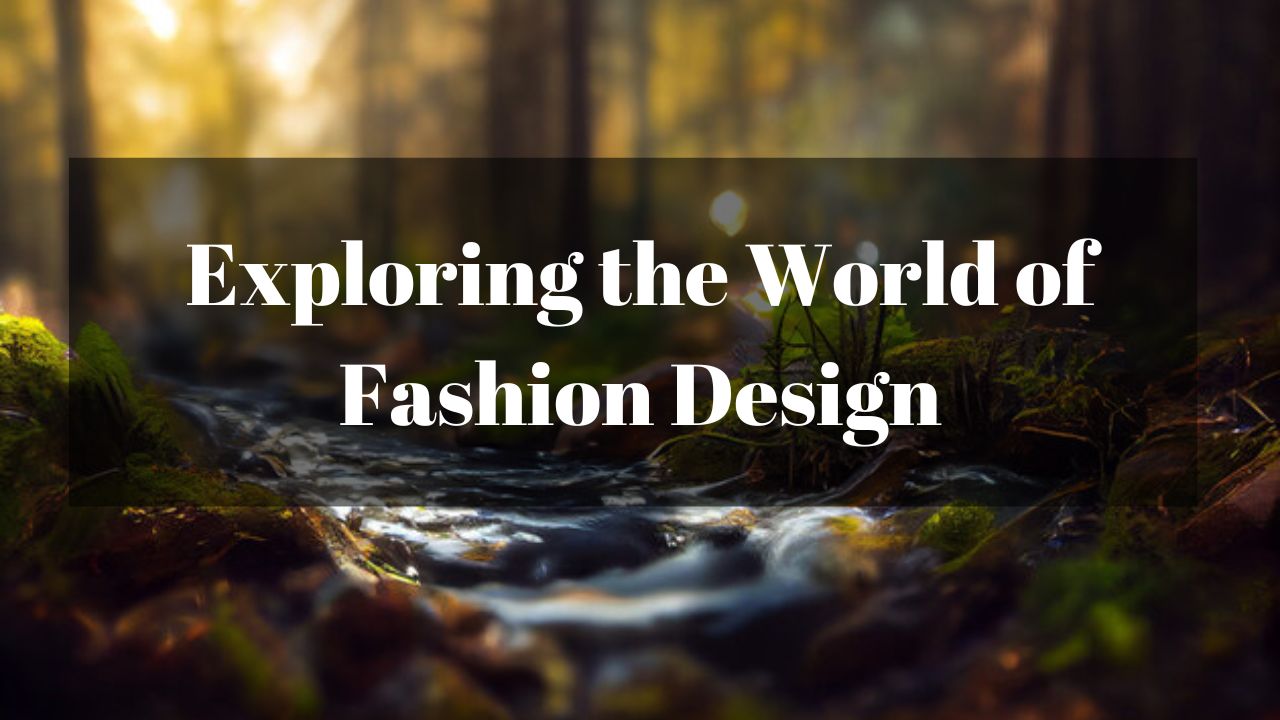Exploring the World of Fashion Design
Fashion design is a captivating and dynamic realm that serves as a canvas for creative expression, innovation, and self-discovery. In this article, we will take a journey into the world of fashion design, unraveling the intricacies of this art form, exploring its evolution, and understanding the creative processes that shape the ever-changing landscape of style.
The Essence of Fashion Design:
Fashion design is more than just creating clothing; it is a form of art that encompasses the conception, creation, and presentation of garments and accessories. At its core, fashion design is an expression of culture, individuality, and societal influences, reflecting the zeitgeist of a particular era.
The Evolution of Fashion:
Fashion has been an integral part of human history, evolving with each era and reflecting shifts in culture, technology, and societal values. From the intricate garments of ancient civilizations to the avant-garde creations of contemporary designers, the history of fashion design is a rich tapestry that weaves together tradition and innovation.
The Role of Fashion Designers:
Fashion designers are the visionaries behind the clothing and accessories that grace runways and fill retail spaces. They possess a unique blend of artistic flair, technical skill, and a keen understanding of market trends. Fashion designers conceptualize ideas, sketch designs, choose fabrics, and oversee the production process, bringing their creations to life.
Creative Processes in Fashion Design:
The creative journey in fashion design begins with inspiration. Designers draw inspiration from a myriad of sources, including art, nature, history, and even everyday life. Once inspired, they sketch their ideas, experiment with fabrics, and create prototypes. The process involves a continuous cycle of refinement until the final product embodies the designer’s vision.
Fashion Design Education:
While some designers are self-taught, many pursue formal education in fashion design to refine their skills and gain a deeper understanding of the industry. Fashion design programs cover a range of subjects, including design principles, pattern-making, textiles, and fashion history. Internships and hands-on experience often play a crucial role in shaping a designer’s practical skills.
Technological Advancements in Fashion Design:
Technology has significantly impacted the field of fashion design, revolutionizing the way designers create and consumers engage with fashion. Computer-aided design (CAD) software allows for precise and intricate designs, while 3D printing opens up new possibilities in garment construction. Online platforms and social media have transformed how designers showcase and market their creations.
Fashion Trends and Forecasting:
The fashion industry operates in a cycle of trends that are influenced by a myriad of factors, including cultural movements, art, music, and global events. Fashion forecasters analyze these influences to predict upcoming trends, providing designers with insights into the colors, fabrics, and styles that will resonate with consumers in the future.
Sustainability in Fashion Design:
With an increasing awareness of environmental issues, sustainability has become a key consideration in fashion design. Designers are exploring eco-friendly materials, ethical production methods, and circular fashion concepts to reduce the industry’s ecological footprint. The intersection of creativity and sustainability is shaping a more responsible and conscious approach to fashion.
Fashion Weeks and Runway Shows:
Fashion weeks, held in major cities around the world, serve as platforms for designers to showcase their collections to a global audience. Runway shows are not only a spectacle of style but also an opportunity for designers to make a statement, challenge norms, and set the tone for upcoming trends. These events celebrate the artistry and innovation within the fashion industry.
The Intersection of Art and Commerce:
Fashion design exists at the intersection of art and commerce. While designers express their creativity through unique and often avant-garde creations, the success of a designer also hinges on their ability to understand consumer preferences, market demands, and the business aspects of the industry. Striking a balance between artistic expression and commercial viability is a skill many successful designers master.
Conclusion:
Fashion design is a dynamic and ever-evolving field that invites individuals to explore their creativity, push boundaries, and contribute to the cultural tapestry of our times. From the sketching table to the runway, designers breathe life into their visions, leaving an indelible mark on the world of style. As we journey through the captivating world of fashion design, we witness the fusion of tradition and innovation, craftsmanship and technology, and the powerful impact this art form has on how we express our identity and engage with the world of clothing and aesthetics.











